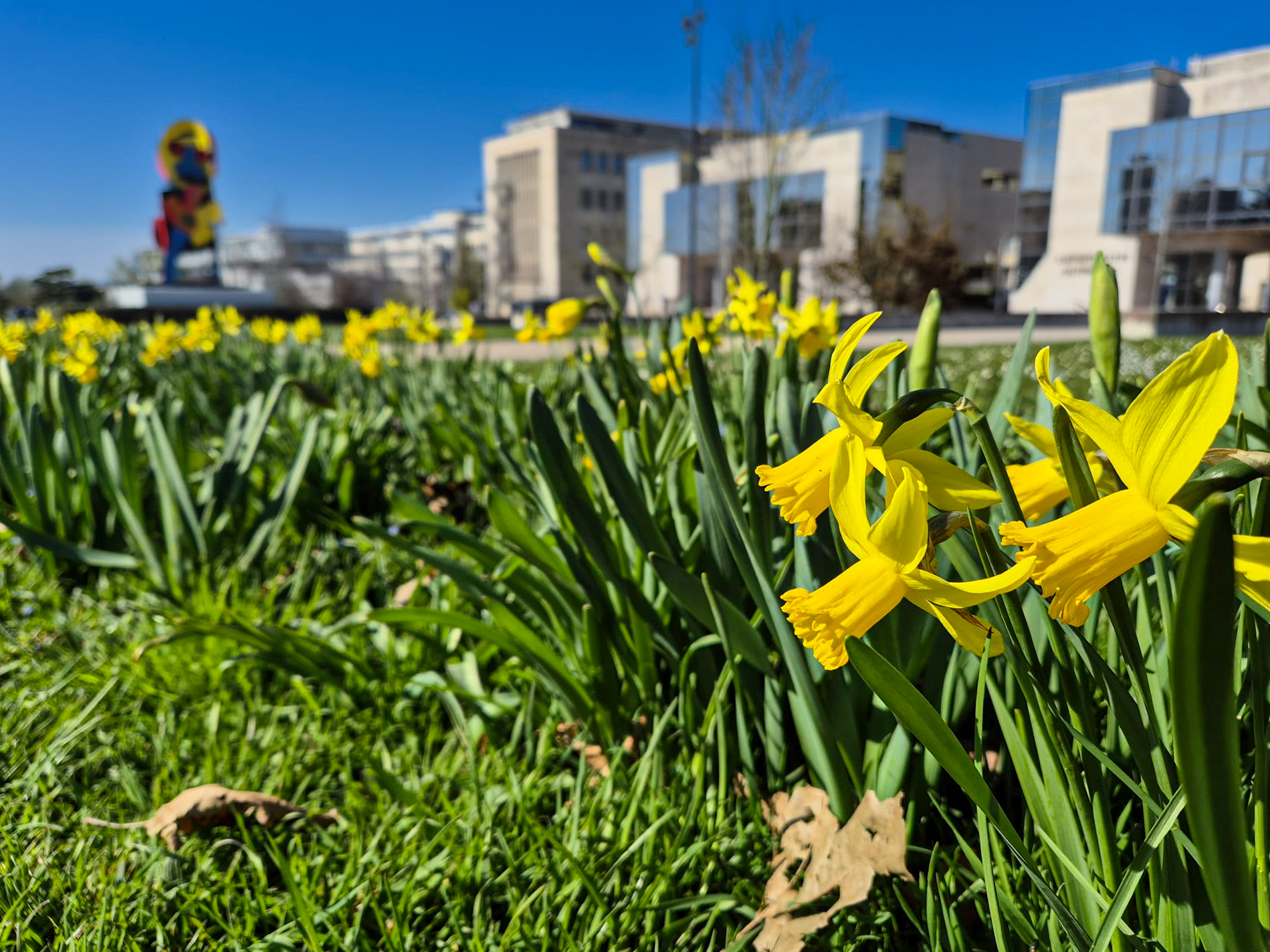Preserving biodiversity and managing green spaces on the Montmuzard campus

The university has been committed to sustainable development for around ten years now. Last year, the Schéma Directeur de Développement Durable et Responsabilité Sociétale et Environnementale (S3DRSE) was voted in to strengthen and continue this approach.
The Montmuzard campus of Université Bourgogne Europe in Dijon is a special place where greenery is omnipresent. The green esplanade and the greenery that make up the campus are a real asset to the quality of life of the entire community.
Fauna and flora management on the campus
Conservatory orchard, fruit alley and indigenous shrubs play an active role in welcoming local fauna, encouraging pollination, fruit production and the maintenance of biodiversity.
Each tree planted is chosen for its resistance and adaptation to the climate. Some plots are left to mow late to preserve natural habitats, encouraging the development of rare species such as certain orchids. The dry grassland, a preserved natural space, completes the area by sheltering a rare and adapted flora. These actions help to reinforce the site’s ecological balance over the long term.
Trees and shrubs are pruned only when necessary, mainly to ensure safety. Scheduled after nesting periods, it protects local wildlife by limiting the number of interventions. Before each cut, a signal is given to avoid disturbing the animals. Hedges are only cut on the outside so as to keep refuge areas intact. This integrated management approach combines respect for biodiversity with sustainable maintenance of green spaces.
Soil management and water use
For the maintenance of grassed areas, mulching is favoured, a method that consists of leaving the grass clippings directly on site. This natural technique nourishes the soil with organic matter, improves its structure and strengthens its capacity to retain water, thus contributing to the healthy development of lawns, without recourse to chemical treatments.
Mechanical intervention on the soil is limited to what is strictly necessary, mainly for new planting or restoration work. Where the soil needs to be enriched, a pit filled with a mixture of soil and local compost is dug. This integrated management approach preserves natural resources while ensuring optimum development of the vegetation.
About water use. Watering is limited to the summer months and reserved mainly for young plantations during their first three years. Thanks to a manual system, watering is adapted to the actual needs of each tree, with an average consumption of 80 litres per week per tree. The water used comes from a well on site, and the greenhouses are watered by rainwater recovery. A number of measures have been put in place to further reduce consumption: no watering of lawns, natural mulching from green waste to limit evaporation and reduce weeding, and early-morning watering to avoid water loss. This overall system illustrates the university’s desire to preserve this precious resource while maintaining a pleasant and sustainable landscape.